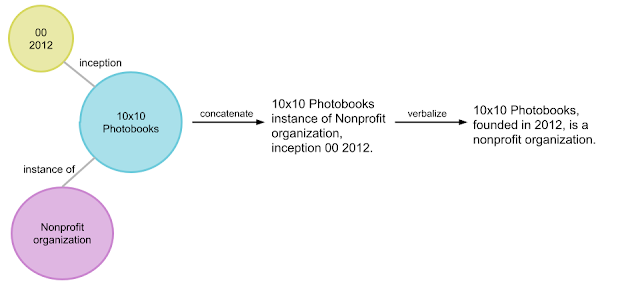Data-to-Text Generation
Warning
This page is still ongoing modifications. Please check back after some time or contact me if it has been a while! Sorry for the inconvenience
Introduction
- Data to Text generation is a task with structured data as input and unstructured text as output. As an example, consider the use case of trying to summarize a table data, where table is the input and text as output.
- KELM [3] is an interesting example. In the paper, the authors try to train a language model using Knowledge graph triplets. But as a KG stores structured data, the first task done by authors was to create subgraphs of KG and verbalize it (as shown below)

- For this they "developed a verbalization pipeline named “Text from KG Generator” (TEKGEN), which is made up of the following components: a large training corpus of heuristically aligned Wikipedia text and Wikidata KG triples, a text-to-text generator (T5) to convert the KG triples to text, an entity subgraph creator for generating groups of triples to be verbalized together, and finally, a post-processing filter to remove low quality outputs. The result is a corpus containing the entire Wikidata KG as natural text, which we call the Knowledge-Enhanced Language Model (KELM) corpus. It consists of ~18M sentences spanning ~45M triples and ~1500 relations." [3]
References
[1] NLP Progress - Data-to-Text Generation
[3] KELM: Integrating Knowledge Graphs with Language Model Pre-training Corpora